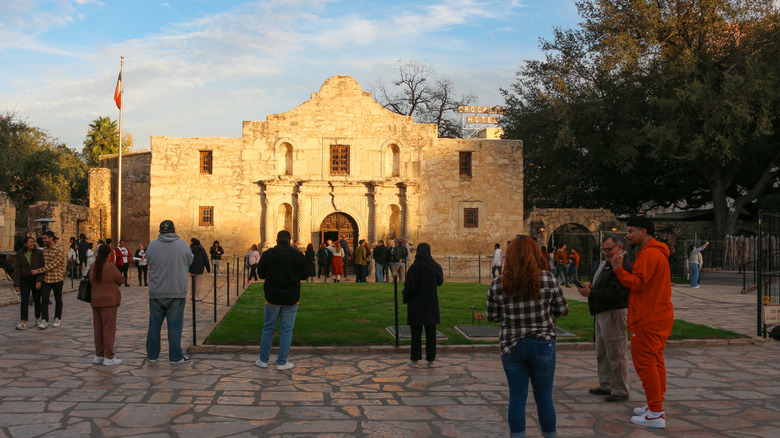Texas' Winding Trail Linking The Alamo To Austin Will Offer Historic Stops And Spring-Fed Adventures
From the treacherous cliffs of America's deadliest national park to the historic district of the Alamo, the Lone Star State is known for its iconic landmarks. And while the Alamo has been called one of the most disappointing landmarks in America, its awe-inspiring historic significance has become a thing of legend. What's more, the Alamo is about to become the starting point for a brand new Texas icon: the Bicentennial Trail. A bill passed in September 2025 will kick-start the planning of a 100-mile-long protected corridor joining together significant landmarks of the Texas landscape from San Antonio to the State Capitol in Austin.
The current vision for the Texas Bicentennial Trail aims to weave together a cohesive route of natural water springs and hiking trails across Central Texas with historic sites. It's seen as a way to inspire locals and visitors to venture out into the wilderness and enjoy the best of what Texas has to offer. But eager adventurers should hold their horses for now — the trail is slated for completion just over a decade away, with a mandated unveiling on January 1, 2036, to commemorate the 200th anniversary of the state's independence from Mexico.
The brainchild of the Great Springs Project, a non-profit organization with aims to foster a better connection with nature, the project brings together officials from the Texas General Land Office, the Texas Department of Transportation, and the Texas Parks & Wildlife Department, who will work in partnership with local government agencies to develop a spring-to-spring route connecting the four most important freshwater springs in Central Texas. The project is equal parts an economic and environmental endeavor — the corridor will conserve a large swath of precious Texas landscape, and with any luck, draw in new visitors to boost the economy.
Following the path of the Texas Bicentennial Trail
Though the Bicentennial Trail is a Herculean undertaking, a general route plan has already been outlined by the Great Springs Project. Anchoring the trail at the southern end is the San Antonio Springs, the freshwater source of the mighty San Antonio River and the first of the four major natural springs in Central Texas. Heading slightly northeast, the corridor veers off to link Comal Springs in New Braunfels with San Marcos Springs before heading directly northwards to conclude the trail at Barton Springs in Austin.
Stop along the banks of the Comal River in New Braunfels for a splash in crystalline waters, or visit the Spring Lake Natural Area in San Marcos to paddle in a glass-bottomed boat, offering a fantastic glimpse of the breathtaking scenery that has flourished thanks to the San Marcos Springs. Over in Austin, sunbathe along the shores of Barton Springs Pool, or jump in to cool off in the refreshing spring water.
Straddling four different counties, several quaint towns also fall within the path of the Bicentennial Trail, among them Selma, famous as a safe haven during the persecution of the civil rights era, not to mention Kyle, which claims the delectable title of the "Pie Capital of Texas." Just imagine all the thrills that await when you will one day be able to sojourn from the austere Alamo church to Selma's historic district, reward yourself with a mouthwatering pie in Kyle, and snap celebratory photos in front of Austin's majestic state capitol for a journey well done. And even though the San Antonio Riverwalk is considered an overrated tourist trap, why not head over there now with your best walking shoes to practice hiking what will surely be another iconic Texas landmark?

